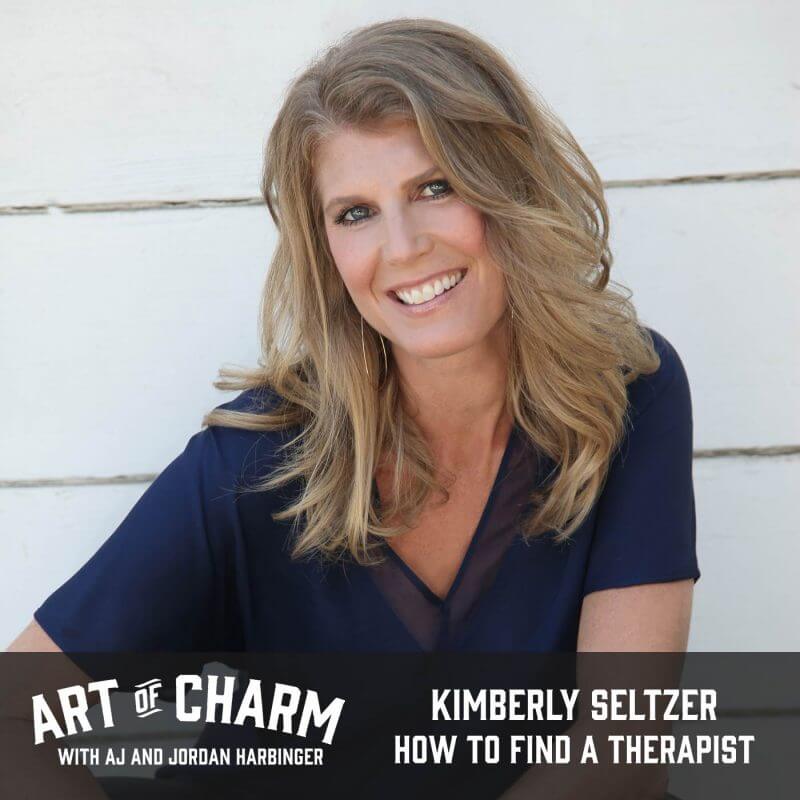Kimberly Seltzer (@SeltzerKimberly) gives us her five-step process for finding a therapist who is right for you.
The Cheat Sheet:
- We all need help from time to time; there’s absolutely no shame in seeking therapy — just as there’s no shame in consulting a tutor if you need help getting through trigonometry or organic chemistry class.
- Finding a therapist is like finding a dentist or any other professional who will have a meaningful impact on your life. You want to make sure you have a comfortable relationship.
- How do we begin the search for a good therapist?
- Here are five steps you can take in preparation for finding the right therapist.
- Something a lot of people don’t know: if you have insurance, it likely does cover some degree of therapy and overall mental health care. Contact your representative for specifics.
- And so much more…
[aoc-subscribe]
Here at The Art of Charm, we do our best to help people become top performers at life, love, and at work. We pick the brains of the best and pass what we learn on to you, but we’ll be the first to admit that sometimes there are things going on in your world that are beyond our expertise. In instances like these, we defer to the appropriate professionals. Sometimes this means a trip to a medical professional, and sometimes this means a visit to a therapist. But in the latter case, if you’ve never been to a therapist, you may not even know where to begin finding one.
In this bonus episode of The Art of Charm, we talk to makeover and confidence expert, dating coach — and, yes, licensed therapist — Kimberly Seltzer about how to take what may be a difficult first step in getting the professional help you need.
More About This Show
At some point in your life, you may benefit greatly from the help of a therapist. The problem is, some people are under the impression that seeking this kind of help is a sign of weakness. Even Tony Soprano spent six seasons looking over his shoulder for fear that paranoid “business colleagues” might catch wind of his therapy sessions and exploit them as proof that he was unfit to lead.
But maybe that’s just because he lived in New Jersey. On the other side of the country, in Los Angeles, it’s a different story. Here, people are liable to look at you funny if you confess to not having a therapist. At the end of the day, it doesn’t matter where you’re from or what the local cultural attitude happens to be toward therapy; you’re the one who best knows if you need it or not.
Finding a therapist is like finding a hairdresser, a doctor, a dentist, or any other professional who will have a meaningful impact on your life — you want it to be a good fit. You have to be comfortable talking to the therapist about things that you’d usually reserve for a close friend — and possibly then some.
Kimberly Seltzer’s Five-Step Process for Finding a Good Therapist
1. Look at your personal goals. Really ask yourself what is it that you want in your life. How do you want it to look? What are some challenges that you’re having? If things were to change, how would your life look if you achieved those goals? Get clear on what it is you need help with. There are a number of ways you can do this. Kimberly suggests “taking out a piece of paper and thinking about, first of all, things that are difficult for you.”
Examples include: I have a hard time in social situations. I tend to be pretty shy. I have a hard time initiating. I get down on myself a lot. I have a hard time with confidence.In the second column, list your goals toward overcoming these challenges. Kimberly’s examples: In social situations, I’d love to be able to walk in a room and feel comfortable and actually engage and initiate in conversation. I’d love to feel happy 80 percent of my day rather than only 20 percent.
“The more specific you can get,” says Kimberly, “and the more measurable, it’ll be easier to really take a look at what it is you need.”
2. Look at the value of what therapy is for you — both on a personal level and a financial level. “I invite everybody to check in with yourself about how you value yourself and what you are willing to invest to feel better,” says Kimberly. “A lot of people don’t value therapy. It’s not tangible. It’s not something you can see or feel or touch like a TV or a stereo.”
But if you can look past this and understand that if you need therapy, money invested toward that purpose is money that’s going toward a dramatic improvement in your life — which is tangible in countless ways.As far as how much that investment will be, always check with your insurance company first to find out what it will (and will not) cover. Specifically, clarify the number of sessions and what type of therapists are covered.
“Mental health is covered on most people’s benefits,” says Kimberly. “They don’t know that.” Bonus tip: some therapists work on a sliding scale for people who either have limited benefits or no insurance at all.
Unless they’re lawyers, apparently. Live and learn.
3. Research and understand the different type of therapists and centers that are out there. In the last step, you evaluated the type of budget you can afford to spend on therapy. If you find that your insurance doesn’t make it as affordable as you’d like, there are community centers and programs designed specifically for college students (to name just a couple of your most likely options).
“What gets confusing is there’s a lot of degrees out there,” says Kimberly. “And in each state, it varies, so it’s hard to kind of speak to the masses. Because when I lived in Chicago an LCSW (Licensed Clinical Social Worker), which is the degree that I have, we were kind of the clinicians. We were the therapists. I moved here to California and it was different. Even though we could practice, it was just different.
“In other words, your mileage will vary based on your locality and what type of therapy is practiced by degree where you live.
Here are some of the common ones you’ll come across:
- MFT (Marriage and Family Therapy)
- LCSW (Licensed Clinical Social Worker)
- PsyD (Doctor of Psychology)
- MD (Doctor of Medicine)
- MHC (Mental Health Counselor)
- Coach
And then there are theoretical orientations. Some examples:
Oh! Let’s not forget the nearly countless varieties of therapeutic techniques!
Honestly, don’t let all of this information overwhelm you — we’re just trying to demonstrate that no matter what it is you’re going through, there are numerous ways of addressing it. Again, regional variations are more easily sussed out by researching what’s available in your area.
4. Determine your level of commitment. How much time are you willing to put into therapy? You have to look at your own patterns. What is your tendency for follow-through and taking responsibility? “You could say, ‘I’m going to go to therapy!'” says Kimberly. “And you kind of announce it to the world. And then you go to one or two sessions and you’re like, ‘It didn’t work. This sucks.’ You have this thing in your mind that therapy sucks. But really, if you look at the pattern of your own behavior, how often in your life do you do this — where you don’t follow through and then you blame outside of yourself?
“It might indicate why you needed therapy in the first place, but also that the particular type of therapy you ended up with wasn’t quite the right match for your personality and situation. As you saw in the extensive lists of information above, there’s almost certainly someone who specializes in addressing your particular set of problems that need work.
Some people respond well to art therapy, for instance, while others will get zero benefit out of the experience. Don’t let a bad match stop you from trying something else!
5. Determine your level of comfort with the therapist you choose. Kimberly recommends interviewing at least a couple of them after you’ve done your research.
“Hop on the phone,” says Kimberly, “and/or actually have a free session; a lot of them will offer a free session or free consults — maybe not for the full time, but maybe for 15 minutes or something like that. Get their body language; get their vibe. Do you feel comfortable? Are they communicating in your language? Are they talking to you in a way that you understand and feel comfortable with? More important, do you feel like they “get” you and understand you? That’s huge.”
“A lot of times, maybe you like somebody, but then the things that they’re saying, they’re totally off. They’re not getting you. And that’s okay. Not everybody is a match, so don’t give up…if there’s one therapist and it doesn’t work, don’t generalize and say, ‘Oh, therapists suck,’ or, ‘I hate therapy.’ Really give it a chance and talk to as many people as you can!”
Remember, if things in your life just aren’t making sense, or you feel like you have all the pieces of the big puzzle in place but you just don’t know how to put them together, therapy may provide you with the breakthrough you seek. Even if you’re just looking at these five steps and understanding the idea behind them right now, you’ll be all the more ready to pursue therapy with an informed approach when you decide it’s time.
THANKS, KIMBERLY SELTZER!
If you enjoyed this session with Kimberly Seltzer, let her know by clicking on the link below and sending her a quick shout out on Twitter:
Click here to thank Kimberly Seltzer on Twitter!
Resources from this episode:
Kimberly Seltzer’s website
Kimberly Seltzer at Facebook
The Great Love Debate
Kimberly Seltzer at Twitter
The Art of Charm bootcamps
You’ll also like:
-The Art of Charm Toolbox
-Best of The Art of Charm Podcast
On your phone? Click here to write us a well-deserved iTunes review and help us outrank the riffraff!




